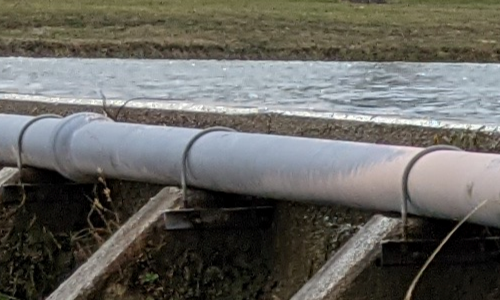Augmented reality (AR) uses computer-generated perceptual information to allow the user to interact with the real world in a way that enhances the objects human eyes can discover. H&H modeling involves modeling real-world drainage assets into computer programs. Over the last 25 years, H&H modeling has grown from solving linear equations to complex computer models that can solve LIDAR-based terrain data and 3-D shapes. The visualization of the computer-generated point clouds and meshes has improved significantly with the advancements in the graphics card and display hardware. AR has huge applications in the visualization of water surfaces and other drainage assets like pipes, ditches, culverts, bridges, etc. It has specific benefits in the visualization of hidden infrastructure like sub-surface utilities. Currently, the Microsoft holo lens costs over $3000 but with apple launching their AR glasses in 2 years, the cost of hardware will drop significantly and it will be accessible to workers in the design and construction industry.
This session will discuss the workflow to convert real-world assets from the LIDAR scanning Polycom app on iOS devices to Unity software and to use the data to create an AR experience on iOS devices. You will also learn how to use Microstation Geopak files in Unity. AR can reduce costs significantly in large design-build projects and help design engineers fix their models with data available on-site faster and more accurately.
Civil Engineers and CAD professionals create thousands of gigabytes of drawings and 3D objects. By exporting that data into gaming engines like Unity and Unreal engine, an amazing extended reality experience is created for clients and citizens. This session helps to understand how AR can help engineers to take their model to the real world with the help of iPad, iPhone, or AR glasses. Large scale models as used in many roadway projects can be viewed with ease by tracking users motion with the device using a combination of GPS, ARKit, and ARCore. The real world can be a better base map than using aerial imageries and contour data for distance or height perception.
TFMA 2022 Annual Meeting Slides
Presented by: Sanjay Singh Negi, PMP, PE, CFM
Ask a question at slido.com with #794360 or Click here


